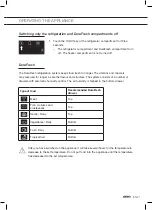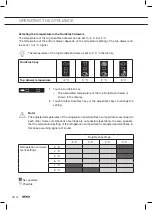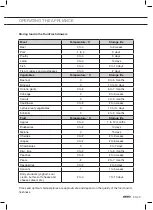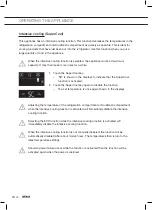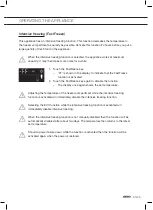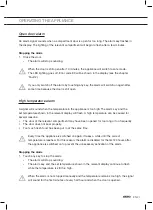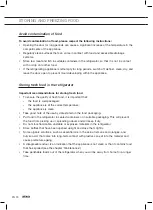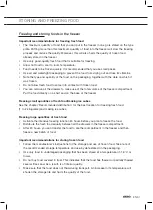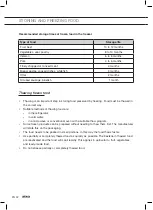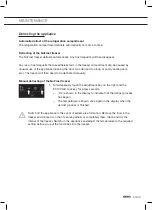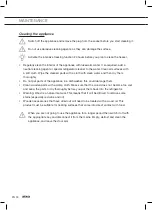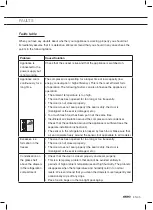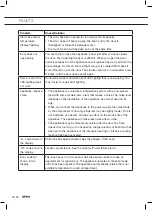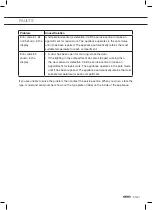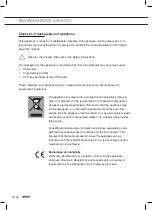
EN 35
Faults table
When you have any doubts about whether your appliance is working properly you should not
immediately assume that it is defective. We recommend that you should in any case check the
points in the following table.
Problem
Cause/Solution
Appliance is
connected to the
power supply but
is not working.
Check that the socket is live and that the appliance is switched on.
Appliance cools
continuously for a
long time.
A
The compressor is operating for a longer time at low capacity (low
energy consumption / high efficiency). This is the most efficient form
of operation. The following factors can also influence the appliance's
operation:
• The ambient temperature is too high.
• The door has been opened for too long or too frequently.
• The door is not closed properly.
• The door does not seal properly (the seal is dirty, the door is
misaligned or the seal is damaged, etc.).
• Too much fresh food has been put in at the same time.
• Insufficient air circulation around the compressor and condenser.
Check that the ventilation around the appliance is sufficient (see the
separate installation instructions).
• The sensor in the refrigerator is blocked by fresh food. Make sure that
air can circulate freely around the sensor (not applicable to all models).
Excessive ice
formation in the
freezer.
• The door has been opened for too long or too frequently.
• The door is not closed properly.
• The door does not seal properly (the seal is dirty, the door is
misaligned or the seal is damaged, etc.).
Condensation on
the glass shelf
above the drawers
in the refrigeration
compartment.
• Check that the door is closed properly and seals properly.
• This is a temporary problem that cannot be avoided entirely in
periods of high ambient temperatures and high humidity. The problem
disappears when the temperature and humidity return to normal
levels. We recommend that you clean the drawers more frequently and
occasionally wipe off any drips.
• Pack food in bags or other air-tight packaging.
FAULTS

